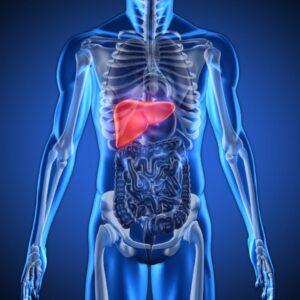Red meat has long been a staple in the diets of many people, but what if I told you that there are hidden dangers lurking within your favorite steak or burger? In this eye-opening article, we will delve into the untold health risks associated with consuming red meat and how it could potentially impact your well-being. Recent studies have revealed alarming correlations between red meat consumption and various health issues, including an increased risk of heart disease, certain types of cancer, and even premature death.
The link between red meat consumption and heart disease has been a topic of considerable research and debate. While red meat is a good source of protein and essential nutrients like iron and vitamin B12, excessive consumption, particularly of processed red meats like bacon, sausages, and deli meats, has been associated with an increased risk of heart disease.
Several mechanisms may contribute to this association:
Saturated fat and cholesterol: Red meats, especially fattier cuts, contain high levels of saturated fat and cholesterol. Consuming too much saturated fat and cholesterol can raise levels of LDL cholesterol (the “bad” cholesterol) in the blood, increasing the risk of heart disease.
Heme iron: Red meats contain heme iron, which is more readily absorbed by the body compared to non-heme iron found in plant foods. High levels of heme iron may contribute to oxidative stress and inflammation, which are risk factors for heart disease.
- Nitrites and nitrates: Processed red meats often contain added nitrites and nitrates, which are used as preservatives and can form nitrosamines during cooking. Nitrosamines are known carcinogens and may also contribute to heart disease.
- Advanced glycation end products (AGEs): Cooking red meat at high temperatures, such as grilling or frying, can produce AGEs, compounds associated with inflammation and oxidative stress, which are risk factors for heart disease.
While observational studies have consistently shown associations between red meat consumption and heart disease, it’s essential to note that correlation does not imply causation. Other lifestyle factors associated with high red meat consumption, such as a sedentary lifestyle, smoking, and poor dietary patterns overall, may also contribute to the increased risk of heart disease.
However, current dietary guidelines often recommend limiting red meat consumption, particularly processed red meats, in favor of leaner protein sources like poultry, fish, legumes, and nuts, which are associated with a lower risk of heart disease. As with any dietary recommendation, individual factors such as overall diet, health status, and personal preferences should be considered when making dietary choices.
Red Meat and Its Association with Cancer
The association between red meat consumption and cancer risk, particularly colorectal cancer, has been a subject of extensive research. Here are some key points regarding this association:
- Colorectal cancer: Numerous studies have found a consistent association between high consumption of red and processed meats and an increased risk of colorectal cancer. Processed meats, such as bacon, sausage, hot dogs, and deli meats, appear to pose a higher risk than unprocessed red meats like beef, pork, and lamb. The mechanisms behind this association are not entirely understood but may involve factors such as the presence of carcinogens formed during cooking or processing, as well as the impact of dietary components like heme iron and saturated fat on gut health and inflammation.
- Heme iron: Red meats are rich in heme iron, a type of iron that is more readily absorbed by the body compared to non-heme iron found in plant foods. High intake of heme iron has been suggested as a potential contributor to the development of colorectal cancer, possibly through mechanisms involving oxidative stress and DNA damage in the colon.
- Nitrites and nitrates: Processed meats often contain added nitrites and nitrates, which are used as preservatives and can form nitrosamines during cooking or digestion. Nitrosamines are known carcinogens and may increase the risk of colorectal cancer.
- Heterocyclic amines (HCAs) and polycyclic aromatic hydrocarbons (PAHs): Cooking red meat at high temperatures, such as grilling, frying, or broiling, can lead to the formation of HCAs and PAHs, which are carcinogenic compounds. These substances can damage DNA and potentially increase cancer risk.
- Saturated fat: Red meats, especially fatty cuts, are a significant source of saturated fat, which has been associated with an increased risk of various cancers, including colorectal cancer. However, the role of saturated fat in cancer development is still an area of ongoing research and debate.
It’s important to note that while the evidence linking red and processed meat consumption to colorectal cancer risk is robust, the overall risk remains relatively small in the context of other factors such as genetics, lifestyle, and overall diet. Additionally, other types of cancer, such as pancreatic and prostate cancer, have also been studied in relation to red meat consumption, although the evidence is less consistent.
Current dietary guidelines often recommend limiting consumption of red and processed meats and opting for leaner protein sources like poultry, fish, legumes, and nuts as part of a balanced diet to reduce cancer risk and promote overall health.
The association between red meat consumption and cancer risk, particularly colorectal cancer, has been a subject of extensive research. Here are some key points regarding this association:
- Colorectal cancer: Numerous studies have found a consistent association between high consumption of red and processed meats and an increased risk of colorectal cancer. Processed meats, such as bacon, sausage, hot dogs, and deli meats, appear to pose a higher risk than unprocessed red meats like beef, pork, and lamb. The mechanisms behind this association are not entirely understood but may involve factors such as the presence of carcinogens formed during cooking or processing, as well as the impact of dietary components like heme iron and saturated fat on gut health and inflammation.
- Heme iron: Red meats are rich in heme iron, a type of iron that is more readily absorbed by the body compared to non-heme iron found in plant foods. High intake of heme iron has been suggested as a potential contributor to the development of colorectal cancer, possibly through mechanisms involving oxidative stress and DNA damage in the colon.
- Nitrites and nitrates: Processed meats often contain added nitrites and nitrates, which are used as preservatives and can form nitrosamines during cooking or digestion. Nitrosamines are known carcinogens and may increase the risk of colorectal cancer.
- Heterocyclic amines (HCAs) and polycyclic aromatic hydrocarbons (PAHs): Cooking red meat at high temperatures, such as grilling, frying, or broiling, can lead to the formation of HCAs and PAHs, which are carcinogenic compounds. These substances can damage DNA and potentially increase cancer risk.
- Saturated fat: Red meats, especially fatty cuts, are a significant source of saturated fat, which has been associated with an increased risk of various cancers, including colorectal cancer. However, the role of saturated fat in cancer development is still an area of ongoing research and debate.
It’s important to note that while the evidence linking red and processed meat consumption to colorectal cancer risk is robust, the overall risk remains relatively small in the context of other factors such as genetics, lifestyle, and overall diet. Additionally, other types of cancer, such as pancreatic and prostate cancer, have also been studied in relation to red meat consumption, although the evidence is less consistent.
Current dietary guidelines often recommend limiting consumption of red and processed meats and opting for leaner protein sources like poultry, fish, legumes, and nuts as part of a balanced diet to reduce cancer risk and promote overall health.
Red Meat and its Effect on Weight Gain and Obesity
The relationship between red meat consumption and weight gain or obesity is complex and can be influenced by various factors such as portion size, cooking methods, overall dietary patterns, and individual metabolism. Here are some key points regarding this topic:
- Caloric density: Red meats, especially fatty cuts, tend to be calorie-dense due to their high fat content. Consuming large portions of red meat regularly without balancing caloric intake from other food sources can contribute to weight gain over time.
- Satiety: Protein is known to be more satiating than fats or carbohydrates. Red meat is a rich source of protein, and including it in meals may help promote feelings of fullness and reduce overall calorie intake. However, the satiating effects of red meat may vary depending on factors such as cooking method and accompanying ingredients (e.g., adding high-calorie sauces or toppings).
- Processed meats: Processed red meats, such as sausages, bacon, and deli meats, often contain added fats, sodium, and preservatives, which can contribute to weight gain and obesity when consumed in excess. Additionally, observational studies have linked high consumption of processed meats to an increased risk of weight gain and obesity.
- Cooking methods: The way red meat is prepared can influence its impact on weight gain. Cooking methods that involve high heat and added fats, such as frying or grilling with oil, can significantly increase the calorie content of red meat dishes. Choosing lean cuts of red meat and using healthier cooking methods, such as baking, broiling, or grilling without added fats, can help mitigate the calorie load.
- Role within dietary patterns: Red meat consumption should be considered within the context of overall dietary patterns. Diets high in red and processed meats often correlate with other unhealthy dietary habits, such as low intake of fruits, vegetables, and whole grains, which are associated with weight gain and obesity. In contrast, balanced diets that prioritize whole, minimally processed foods, including lean protein sources like poultry, fish, legumes, and nuts, may help support weight management and overall health.
While moderate consumption of lean red meats can be part of a healthy diet, it’s essential to emphasize portion control, choose lean cuts, and balance intake with a variety of other nutrient-dense foods to mitigate the risk of weight gain and obesity. As with any dietary component, individual preferences, cultural considerations, and health status should be taken into account when making food choices.
Reducing red meat consumption can be a beneficial dietary change for health and sustainability reasons. Here are some tips to help you gradually decrease your intake of red meat:
- Start small: Begin by setting achievable goals, such as reducing your red meat consumption by one meal per week. Once you feel comfortable with this change, gradually increase the frequency or portion size of meatless meals.
- Experiment with plant-based protein sources: Explore alternative protein sources such as beans, lentils, tofu, tempeh, chickpeas, and edamame. These plant-based proteins are nutritious, versatile, and can be used in a wide variety of recipes.
- Embrace meatless meals: Incorporate meatless meals into your weekly meal plan. Explore vegetarian and vegan recipes for inspiration, or adapt your favorite meat-based recipes by substituting meat with plant-based proteins or additional vegetables.
- Focus on variety: Expand your culinary repertoire by trying new cuisines and recipes that feature plant-based ingredients. Experimenting with different flavors, textures, and cooking methods can make meatless meals more enjoyable and satisfying.
- Plan ahead: Plan your meals in advance to ensure you have the necessary ingredients on hand for meatless dishes. Preparing meals in batches or using meal prep techniques can also save time and make it easier to stick to your dietary goals.
- Use meat as a garnish: Instead of making meat the main focus of your meals, use smaller amounts of red meat as a flavoring or garnish in dishes such as stir-fries, salads, soups, and pasta dishes. This allows you to enjoy the taste of meat while reducing overall consumption.
- Opt for leaner cuts: When you do choose to eat red meat, opt for leaner cuts such as sirloin, tenderloin, or loin chops, which tend to have lower fat content compared to fattier cuts like ribeye or T-bone steak.
- Practice meatless days: Designate one or more days per week as meatless days and plan meals that are entirely plant-based. This can help you gradually reduce your reliance on red meat and increase your consumption of nutrient-rich plant foods.
- Be flexible: Remember that reducing red meat consumption doesn’t have to be an all-or-nothing approach. Find a balance that works for you and be flexible in your dietary choices.
- Seek support: Share your goals with friends, family, or online communities for accountability and support. You may also consider consulting a registered dietitian or nutritionist for personalized guidance and meal planning tips.
Reducing red meat consumption can be a beneficial dietary change for health and sustainability reasons. Here are some tips to help you gradually decrease your intake of red meat:
- Start small: Begin by setting achievable goals, such as reducing your red meat consumption by one meal per week. Once you feel comfortable with this change, gradually increase the frequency or portion size of meatless meals.
- Experiment with plant-based protein sources: Explore alternative protein sources such as beans, lentils, tofu, tempeh, chickpeas, and edamame. These plant-based proteins are nutritious, versatile, and can be used in a wide variety of recipes.
- Embrace meatless meals: Incorporate meatless meals into your weekly meal plan. Explore vegetarian and vegan recipes for inspiration, or adapt your favorite meat-based recipes by substituting meat with plant-based proteins or additional vegetables.
- Focus on variety: Expand your culinary repertoire by trying new cuisines and recipes that feature plant-based ingredients. Experimenting with different flavors, textures, and cooking methods can make meatless meals more enjoyable and satisfying.
- Plan ahead: Plan your meals in advance to ensure you have the necessary ingredients on hand for meatless dishes. Preparing meals in batches or using meal prep techniques can also save time and make it easier to stick to your dietary goals.
- Use meat as a garnish: Instead of making meat the main focus of your meals, use smaller amounts of red meat as a flavoring or garnish in dishes such as stir-fries, salads, soups, and pasta dishes. This allows you to enjoy the taste of meat while reducing overall consumption.
- Opt for leaner cuts: When you do choose to eat red meat, opt for leaner cuts such as sirloin, tenderloin, or loin chops, which tend to have lower fat content compared to fattier cuts like ribeye or T-bone steak.
- Practice meatless days: Designate one or more days per week as meatless days and plan meals that are entirely plant-based. This can help you gradually reduce your reliance on red meat and increase your consumption of nutrient-rich plant foods.
- Be flexible: Remember that reducing red meat consumption doesn’t have to be an all-or-nothing approach. Find a balance that works for you and be flexible in your dietary choices.
- Seek support: Share your goals with friends, family, or online communities for accountability and support. You may also consider consulting a registered dietitian or nutritionist for personalized guidance and meal planning tips.
Conclusion And Recommendations for A Balanced Diet
In conclusion, a balanced diet is essential for promoting overall health and well-being. It should include a variety of nutrient-rich foods from all food groups to ensure adequate intake of essential nutrients while minimizing the risk of chronic diseases. Here are some key recommendations for achieving a balanced diet:
- Emphasize fruits and vegetables: Aim to fill half your plate with fruits and vegetables at each meal. These foods are rich in vitamins, minerals, antioxidants, and fiber, which are essential for supporting immune function, reducing the risk of chronic diseases, and maintaining digestive health.
- Include whole grains: Choose whole grains such as brown rice, quinoa, oats, barley, and whole wheat bread over refined grains. Whole grains provide fiber, vitamins, minerals, and antioxidants, and they can help regulate blood sugar levels and promote heart health.
- Prioritize lean proteins: Incorporate lean protein sources into your diet, such as poultry, fish, beans, lentils, tofu, tempeh, and low-fat dairy products. These foods provide essential amino acids for muscle growth and repair, as well as other nutrients like iron, zinc, and B vitamins.
- Limit red and processed meats: Reduce consumption of red and processed meats, such as beef, pork, lamb, bacon, sausage, and deli meats. These foods are often high in saturated fat, cholesterol, and sodium, and their excessive intake has been linked to an increased risk of heart disease, cancer, and obesity.
- Choose healthy fats: Include sources of healthy fats in your diet, such as avocados, nuts, seeds, olive oil, and fatty fish like salmon and tuna. These fats provide essential fatty acids and fat-soluble vitamins, and they can help reduce inflammation and support brain health.
- Monitor portion sizes: Pay attention to portion sizes to avoid overeating and maintain a healthy weight. Use smaller plates and practice mindful eating by slowing down and savoring each bite. Pay attention to hunger and fullness cues to prevent overeating.
- Stay hydrated: Drink plenty of water throughout the day to stay hydrated and support bodily functions. Limit consumption of sugary drinks, sodas, and excessive caffeine, which can contribute to empty calories and dehydration.
- Limit added sugars and processed foods: Minimize consumption of foods and beverages high in added sugars, refined carbohydrates, and processed ingredients. Instead, focus on whole, minimally processed foods that provide nutrients and sustained energy.
- Moderate alcohol consumption: If you choose to drink alcohol, do so in moderation. Limit intake to no more than one drink per day for women and two drinks per day for men, and avoid excessive drinking, which can increase the risk of liver disease, obesity, and other health problems.
- Be flexible and enjoy treats in moderation: Allow yourself to enjoy your favorite foods occasionally, but aim for balance and moderation in your overall diet. Focus on making healthy choices most of the time while still allowing room for indulgences.
By following these recommendations and making informed choices about your diet, you can achieve a balanced and nutritious eating pattern that supports your health and well-being in the long term. Remember to listen to your body, prioritize variety, and seek guidance from a registered dietitian or nutritionist if needed to tailor your diet to your individual needs and preferences.
In conclusion, a balanced diet is essential for promoting overall health and well-being. It should include a variety of nutrient-rich foods from all food groups to ensure adequate intake of essential nutrients while minimizing the risk of chronic diseases. Here are some key recommendations for achieving a balanced diet:
- Emphasize fruits and vegetables: Aim to fill half your plate with fruits and vegetables at each meal. These foods are rich in vitamins, minerals, antioxidants, and fiber, which are essential for supporting immune function, reducing the risk of chronic diseases, and maintaining digestive health.
- Include whole grains: Choose whole grains such as brown rice, quinoa, oats, barley, and whole wheat bread over refined grains. Whole grains provide fiber, vitamins, minerals, and antioxidants, and they can help regulate blood sugar levels and promote heart health.
- Prioritize lean proteins: Incorporate lean protein sources into your diet, such as poultry, fish, beans, lentils, tofu, tempeh, and low-fat dairy products. These foods provide essential amino acids for muscle growth and repair, as well as other nutrients like iron, zinc, and B vitamins.
- Limit red and processed meats: Reduce consumption of red and processed meats, such as beef, pork, lamb, bacon, sausage, and deli meats. These foods are often high in saturated fat, cholesterol, and sodium, and their excessive intake has been linked to an increased risk of heart disease, cancer, and obesity.
- Choose healthy fats: Include sources of healthy fats in your diet, such as avocados, nuts, seeds, olive oil, and fatty fish like salmon and tuna. These fats provide essential fatty acids and fat-soluble vitamins, and they can help reduce inflammation and support brain health.
- Monitor portion sizes: Pay attention to portion sizes to avoid overeating and maintain a healthy weight. Use smaller plates and practice mindful eating by slowing down and savoring each bite. Pay attention to hunger and fullness cues to prevent overeating.
- Stay hydrated: Drink plenty of water throughout the day to stay hydrated and support bodily functions. Limit consumption of sugary drinks, sodas, and excessive caffeine, which can contribute to empty calories and dehydration.
- Limit added sugars and processed foods: Minimize consumption of foods and beverages high in added sugars, refined carbohydrates, and processed ingredients. Instead, focus on whole, minimally processed foods that provide nutrients and sustained energy.
- Moderate alcohol consumption: If you choose to drink alcohol, do so in moderation. Limit intake to no more than one drink per day for women and two drinks per day for men, and avoid excessive drinking, which can increase the risk of liver disease, obesity, and other health problems.
- Be flexible and enjoy treats in moderation: Allow yourself to enjoy your favorite foods occasionally, but aim for balance and moderation in your overall diet. Focus on making healthy choices most of the time while still allowing room for indulgences.
By following these recommendations and making informed choices about your diet, you can achieve a balanced and nutritious eating pattern that supports your health and well-being in the long term. Remember to listen to your body, prioritize variety, and seek guidance from a registered dietitian or nutritionist if needed to tailor your diet to your individual needs and preferences.







